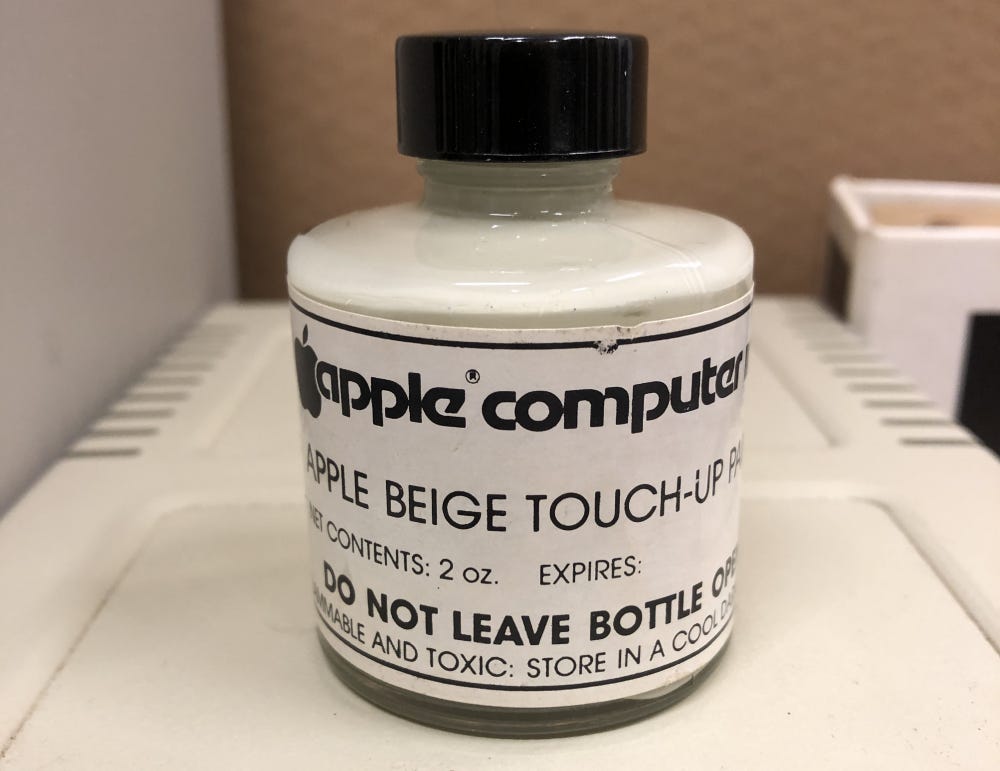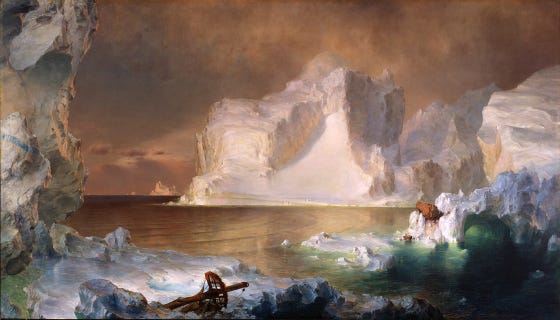much have I travell'd in the realms of internet

This lil’ guy appeared on my feed and you know what: mood. See also: these little sushi roll (ehomaki) cylinders that the Sendai Aquarium gave to their saltwater eels (yes, they made a stuffed version too!)

In terms of other small delights, Jumi Kim, a designer based in NYC, has released an art project called “AirDrop Everyday,” pulling together all the photos she was AirDropped on her subway commute (pre-pandemic!)
A company in Japan makes hats that look like various breads and I want every single one. The straw hats are new for summer: “By using straw material, we were able to get closer to the texture of bread! Let's enjoy a summer outing by wearing brown French bread" Absolutely I will.


Mysteries solved: Another potential solution to what happened in Dylatlov Pass1, though this one seems like it might have legs and used the Frozen snow simulator to solve, which is a first. Precisely what color is “Apple Beige?” The first dinosaur butthole has been found and is “perfect” and “unique.”

Mysteries yet to be solved: Thanks to the COVID-19 relief bill, the government has until the end of June to submit a report about what they know about UFOs (lit: “on unidentified aerial phenomena (also known as ‘anomalous aerial vehicles’), including observed airborne objects that have not been identified”). Want to get a head start on the reading? You can download a PDF on everything the CIA already knows.
This makes me so happy but I cannot pick a favo(u)rite:
The gritter names this year are off the scale. pic.twitter.com/y12H2LWjBI
— Guffers (@gavmacn) February 7, 2021
Maria Sachiko Cecire drives into the rise of medieval fantasy at Oxford (14 min) under the leadership of (this is no surprise) J.R.R. Tolkien and C.S. Lewis, and how their “disenchantment, relativism, ambiguity and progressivism that they saw and detested in 20th-century modernity” led to this “back to the source” idea turning a “Anglophilic fascination with early Britain and its medieval legends into a globally recognisable setting for children’s adventures, world-saving deeds and magical possibility.”
We will not dive into how Tolkien’s maps are geologically impossible, but a geologist discusses the idea of single-biome planets, and settles on the fact that honestly, the Tatooines and Arrakises of the world are believable, but other biomes a little less so.

It’s iceberg time. Someone on Twitter pointed out that the DMA’s online collection record of this Fredric Edwin Church painting is fantastic and honestly: it is. And there’s great historical context that I was completely unaware of (emphasis mine)
Twelve days after the attack on Fort Sumter ignited the American Civil War, The Icebergs debuted in New York on April 24, 1861. While on view in the U.S., Church’s painting was titled The North, and all exhibition proceeds were donated the Union’s Patriotic Fund (today’s Red Cross).…During the preparations for sending the work abroad, Church altered it in two ways: a new title and the addition of a mast in the foreground2. In deference to England’s support of the Confederate side of the Civil War, Church changed the title from The North to The Icebergs. (For many Americans, the Arctic North and the Union North were inextricably intertwined.)
The website links to IcebergFinder.com which is (in non-COVID times) a map of great icebergs in Labrador and Newfoundland (“Iceberg Alley”). I appreciate that they have a section dedicated to “our favourite bergs from 2019.” In the meantime, you can make your own iceberg with Iceberger! A lot of scientists are excited about this because it helps prove that the “tall and skinny” icebergs we see in illustrations are just… not a thing.
Today I channeled my energy into this very unofficial but passionate petition for scientists to start drawing icebergs in their stable orientations. I went to the trouble of painting a stable iceberg with my watercolors, so plz hear me out.
— Megan Thompson-Munson (@GlacialMeg) February 19, 2021
(1/4) pic.twitter.com/rtkCYub38b
Thanks to the thread I just learned that one of the more famous images of an iceberg underwater is a composite—and not just a composite, but the part underwater was originally above water! Speaking of icebergs (this segue should surprise no one), here’s a dive into Titanic-themed sheet music (you can see more at the Library of Congress) AND apparently Leo DiCaprio’s Malibu home was filled with Titanic merchandise in the 90s. I refuse to question this.

I am so excited to pick up this book reviewed in the NYRB because it’s all about mistakes that poets make and how later criticism tries to justify them.
In the example here—Keats compares himself to “stout Cortez” with “eagle eyes / He star’d at the Pacific” when it was in fact Balboa who first viewed the Pacific
Keats’s mistake in “On First Looking into Chapman’s Homer,” …has been rationalized many times. [One scholar] argued…that Keats, aware he was not the first to discover Homer’s greatness, identified with Cortés’s belatedness as opposed to Balboa’s primacy…plac[ing] Cortés in Darien inaccurately but intentionally, in order to underscore the contrast between the earlier and later explorer….the point here is the commentators’ strange reluctance to treat Keats’s mistake as a mistake. Their urge is not merely to excuse the error but to insist that it somehow makes the poem better, even if they need to resort to their own forms of “wild surmise” to prove it.
May we all be lucky enough to have our mistakes and grammatical errors explained away by our genius! Perchance to dream.
Etcetera: The people wanted Lego bike lanes, and Lego is finally listening. Slightly delayed here: Phoebe, Connecticut’s official hedgehog, stands in for her friend Chuckles on Groundhog Day (also, notably: Chuckles was BLIND which raises additional questions!).
1 Guess what? We have footnotes now. Dyatlov Pass is one of those long-time mysteries: nine Russian hikers died mysteriously in the Ural Mountains and there are many, many theories of why, but enough weird things abound that it has never been fully “solved.”
2 Generally accepted to be a reference to Franklin’s Lost Expedition, which is also the subject of Man Proposes, God Disposes, which is haunted (I discuss that in a previous newsletter here!)
